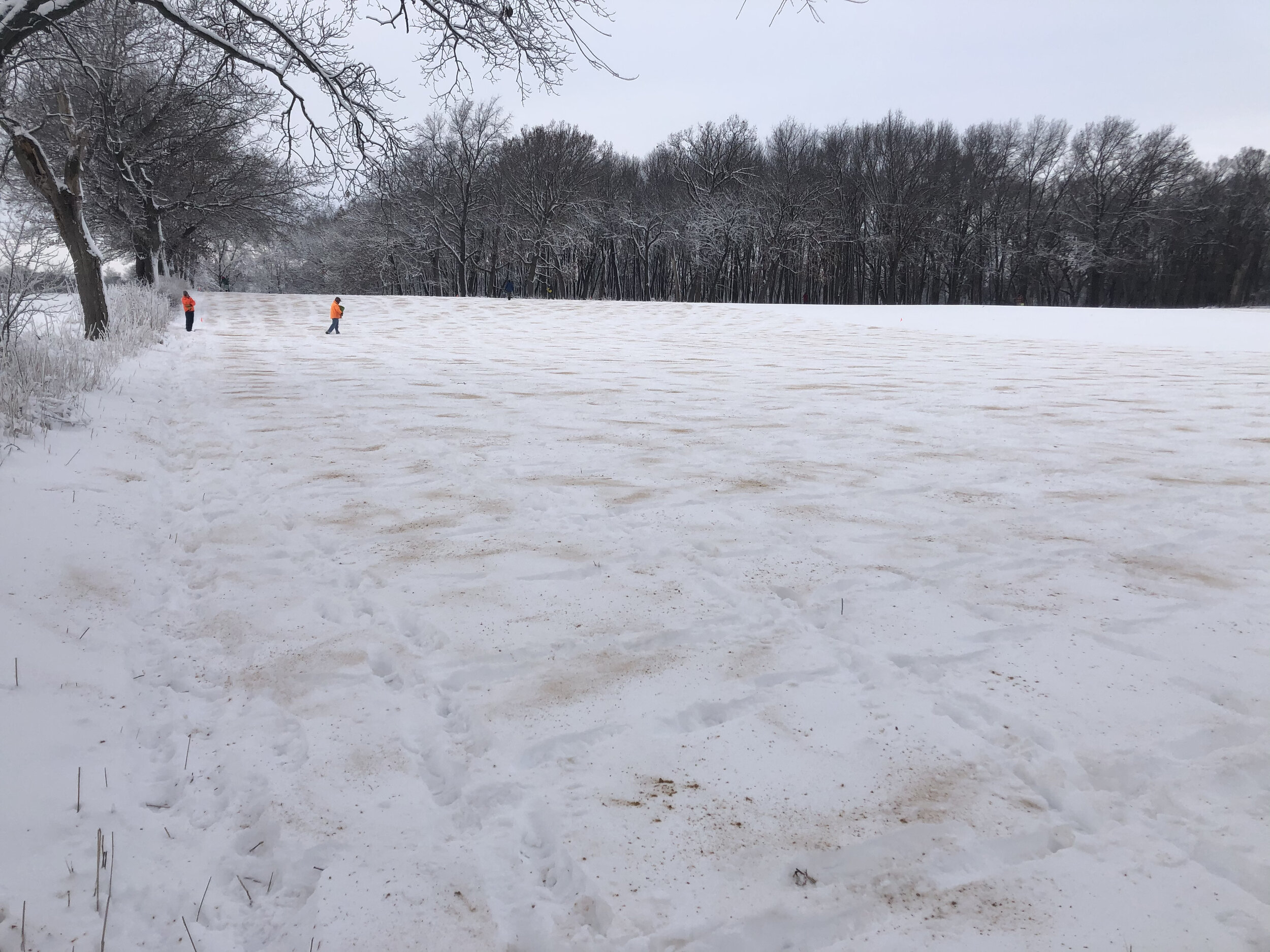Early this Saturday morning, after I had shoveled the new, very wet, very dense, and very heavy snow for what turned out to be the second of four bouts of very manual snow removal, I told Sally I might throw a snowball at anyone I heard humming or, God forbid, singing "Let It Snow" or using the phrase "Winter Wonderland." Perhaps the plague is making me a little cranky or the aches and pains of shoveling have diminished my usual good nature.
Our good folks at Goose Pond and Faville Grove had a different and much healthier attitude toward the snow. On Friday morning, I was lucky enough to be among the dozen or so volunteers who finished sowing a new prairie at the newly acquired Benade tract just down the road from Goose Pond. Just about as the last bucket was thrown in the truck (I think you could make the case that buckets are among the most essential pieces of equipment for prairie management—you can't collect or sow seeds without them), a mix of rain and snow started. With the forecast of snow a near certainty, we couldn't have been happier. Nothing is better for a winter prairie planting then a nice blanket of new snow. It keeps the seeds in place and the freezing and moisture really help with germination.
A blanket of snow covered with a carefully engineered sprinkling of seed. Photo by Drew Harry
Faville Grove, which enjoyed a huge turnout of seed tossing volunteers on post-snowfall Saturday, witnessed another benefit. When you sow seed on snow you see exactly what sort of coverage you're achieving. You can be absolutely sure you're getting the right seed in the right places. And the snow is the perfect receptacle for the seed.
The new prairie at Benade will have an unusual benefit for an Madison Audubon prairie. It sits at just about the top of the Yahara Lakes watershed and was a row crop field. Converting it to prairie will improve water quality and infiltration in the Madison Lakes—okay, maybe not a lot but every little bit helps.
When I was just a tyke, snow taught me my first lesson in the human degradation of our environment and in a way that really hurt. With snow falling so seldom in North Little Rock, Arkansas, any snowfall with enough to cover the ground and last awhile was a source of great joy. Sleds that were only used once a year, if that, were hauled out, snowmen and forts built, and lots of snowballs thrown. Mom made it even more special. She would prepare a French or scalded milk custard. When it had cooled, we were sent to bring in a huge bowl of the freshest, cleanest snow we could find. She'd scoop it into balls and pour the custard over it. SNOW ICE CREAM! So wonderful and such a rare treat. But soon thereafter came the public health warnings about Strontium 90, a by-product of hydrogen bomb testing and a dangerous carcinogen. Enough was in the atmosphere and deposited in rain and snow that snow became much too dangerous to eat.
Strontium 90 has a half-life of about 29 years. I've sometimes wondered if snow is safe to eat again. But the years since my childhood have brought us acid rain, particulates in our air, smog, and now a sky laden with carbon emissions. Snow has many facets but it certainly heralds the start of winter, the season of darkness and struggle for many species (maybe I'm getting just a bit bleak here). For me, at any rate, it's a reminder of how we can too easily add destructive elements to so many aspects of Nature. Let's try to do better in 2021.
I promise the next blog will be more upbeat. I guess I really miss snow ice cream.
Topf Wells, Madison Audubon board member and advocacy committee chair
Cover photo by Drew Harry






